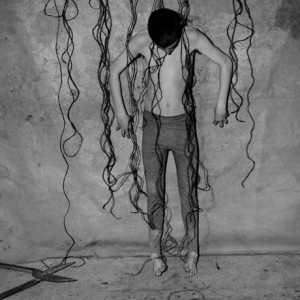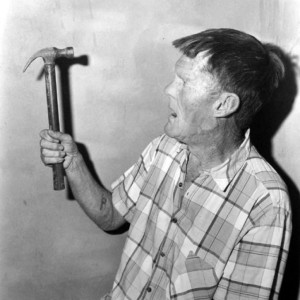Outland: 400 Words on Roger Ballen’s Photography
These reflections were published in the San Francisco Bay Guardian as the review of an exhibition at the Robert Koch Gallery. They can be cited here as: Buckner, Clark. “Outland: 400 Words on Roger Ballen.” Resonator. Web. Day, Month, Year the post was accessed.
For more than twenty years now, Roger Ballen has taken pictures of people living on the margins of society in South Africa . Working, poor, and developmentally disabled, his subjects’ faces are typically distorted by the severe conditions of their lives, physical injuries, or mental retardation; and the walls of their homes are barren except for occasional pictures, patches of dirt, bare light bulbs and wires.
But Ballen is not a social documentarian in any conventional sense. He does not work to capture the harsh reality of his subjects’ lives as an objective fact, but rather presents startling scenes, which disorient the viewer through their juxtaposition of the banal and the sublime. At times, in a manner reminiscent of Diane Arbus, this seems to be the work primarily of Ballen’s eye for the uncanny in the everyday. More often, however, Ballen works like a film director, staging scenes with his subjects in their homes.
In “Scrap Collector Holding Globe,” for example, a man stands on the shredded mattress of a beat up metal bed with a dog sleeping on his feet and a globe in his hands. Rather than romanticizing the severity of his subject’s life in the name of pity or authenticity, Ballen sees an existential absurdity in it. The scrap collector is the protagonist in Ballen’s drama, as a figure of modern man. Overwhelmed by the burden of existence, in the wake of God’s death, he searches for a modicum of value in a world that has been reduced to little more than junk on a scrap heap.
In another picture, “Herman with hammer,” Ballen presents the profile of a man holding a hammer pointed towards his face. With his mouth agape, he appears to be discussing with the hammer whether or not to smash in his own skull.
Ballen and his subjects construct scenes reminiscent of Beckett’s plays. They employ physical gestures, animals, and props as elements of artifice to present life not as it really is, but rather as it barely is.





